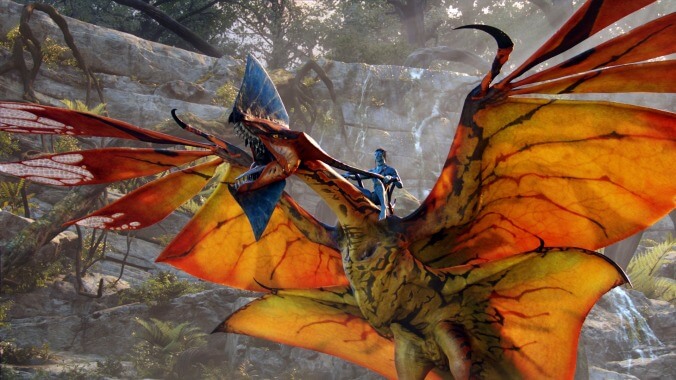Actually, Avatar had a massive impact on pop culture, despite what you've been hearing lately
How James Cameron's blockbuster—still the worldwide box office champ—changed Hollywood, influenced the MCU, and even inspired the likes of Scorsese and Herzog

It’s somehow become a meme in the popular consciousness that Avatar, the highest-grossing movie of all time worldwide, is remembered by nobody, had no lasting impact on pop culture, and was nothing more than a 3-D gimmick. (This despite reports of massive fandoms at the time experiencing depression that they couldn’t actually live within the world of the film.) One of the earliest major takes on the topic came from Forbes writer Scott Mendelson, five years after the movie’s release, and while his was simply a financial analysis that gave the film itself a lot of credit, extremely vocal online fans have repeated the meme to bash the movie, along with Trey Parker and Matt Stone’s insultingly glib characterization of Avatar as “Dances With Smurfs.” (Never mind that an enduring meme is itself a validation of its impact.)
As the film enjoys a remastered re-release ahead of its sequel, Avatar: The Way Of Water, it’s easy to see why some of the more aggressive “Nerd Twitter” voices would deride Avatar. Relative to current sci-fi blockbusters, it’s achingly sincere about its environmentalism, possesses no ironic-distance humor, and it’s also unapologetically horny. Neytiri was specifically designed to be attractive to director James Cameron’s “all-male crew of artists,“ and echoes of the scene in which she cradles the much smaller Jake at the end of the film can be seen in the dating episode of the current She-Hulk TV series. It’s culturally safer, and less open to possible ridicule, to wear a T-shirt featuring Captain America than a naked blue cat person. But it’s not like there were T-shirts to begin with; indeed, a lot of the “no cultural footprint” arguments, including Mendelson’s, are partly inspired by the lack of merchandise upon its original release in 2009.
This is a bit of a false premise. Simply put, merchandise sales have to be lined up about a year in advance, and completely new IP is a tough sell. Consider how many T-shirts in any given Target or Walmart are for ’70s and ’90s bands, or how many best-selling toys are for licenses that have been going since the ’80s or longer, like Transformers, Star Wars, WWE, G.I. Joe, and Marvel/DC Comics. Mattel did put out Avatar toys, but they had a couple of issues. First, the collector-skewing 6-inch figures proved scarce—Neytiri, clearly the main draw for straight male collectors, was a nearly impossible figure to find. The kid-oriented 3-3/4 figures, on the other hand, invested heavily in a proto-NFT-like gimmick that packed each with an augmented reality character to play with in virtual space via webcams. It was an awkward mix of video game and toy that satisfied fans of neither.
Make way for the merch
Now, however, with the sequel on the way, an explosion of belated merchandise for the first film is scheduled to hit stores on Oct. 1. Retailers tend to only go for licenses that can be tied to current entertainment, which is why few tried in the interim. NECA, a company that made a lot of money on toys from previous James Cameron franchises like The Terminator and Aliens, explained during a Twitter Q&A that they had no interest in Avatar. Meanwhile, their primary competitor, McFarlane Toys, secured the rights for both the original film and its forthcoming sequel this quarter.
Merchandise, of course, is only one metric. And in fact, Avatar had a significant cultural influence, albeit one that maybe wasn’t fully visible just five years after release. Take 3D, which had previously been a gimmick primarily used by exploitation films. James Cameron himself kickstarted the modern revival with the 2005 Imax documentary Aliens of the Deep, but in its immediate aftermath, 3D remained mostly an IMAX attraction or an exploitation bonus as before (Robert Rodriguez’s Adventures of Sharkboy and Lava Girl, Patrick Lussier’s My Bloody Valentine 3D). CG animated movies also adopted the format quickly, as the virtual camera POV is simpler to split into two visual channels than live action.
